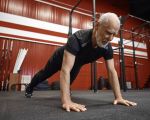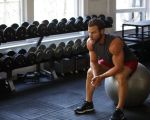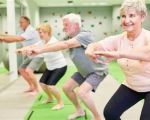- 1-Importance-of-Speed-Training
- 2-Key-Components-of-Sprint-Speed-Workouts
- 3-Strength-Training-Exercises
- 4-Plyometric-and-Explosive-Movements
- 5-Core-and-Flexibility-Work
- 6-Real-Life-Success-Stories
- 7-Getting-Started-with-Speed-Training
1. Importance of Speed Training
Improving sprint speed is critical for athletes in many sports and anyone looking to boost their overall athleticism. Gym workouts for improving sprint speed focus on developing muscular strength, explosive power, and neuromuscular coordination. Sprinting fast requires more than just leg speed—it demands an integrated approach targeting multiple physical attributes.
Without proper training, athletes can plateau or risk injury. Prioritizing speed training helps optimize performance, reduce fatigue, and increase acceleration.
1.1 The Science Behind Sprinting Faster
Speed relies on muscle fiber recruitment, reaction time, and efficient biomechanics. Training in the gym allows targeted improvement in these areas through resistance and plyometric exercises.
2. Key Components of Sprint Speed Workouts
A balanced sprint speed workout includes strength training, plyometrics, core stabilization, and flexibility work. Each component plays a vital role:
- Strength Training: Builds the power needed to push off the ground.
- Plyometrics: Enhances explosive force and quick muscle contractions.
- Core Work: Stabilizes the torso, improving running posture and efficiency.
- Flexibility: Prevents injuries and allows greater stride length.
3. Strength Training Exercises
Gym workouts for improving sprint speed often revolve around compound lifts that target the lower body and posterior chain. Key exercises include:
3.1 Squats and Deadlifts
Squats develop quadriceps, hamstrings, and glutes, which are crucial for sprint propulsion. Deadlifts strengthen the hamstrings and lower back, supporting powerful hip extension.
3.2 Lunges and Step-Ups
These unilateral exercises improve balance and mimic sprinting’s single-leg dynamics, helping correct muscular imbalances.
4. Plyometric and Explosive Movements
Plyometrics train the muscles to generate maximal force quickly. Exercises like box jumps, bounding, and depth jumps improve muscle elasticity and reaction time, both vital for sprint starts and acceleration.
4.1 Medicine Ball Throws
Incorporating medicine ball throws helps develop upper body explosiveness and enhances overall sprint power.
5. Core and Flexibility Work
A strong core ensures stability during high-speed movement. Planks, Russian twists, and leg raises fortify abdominal and lower back muscles.
Flexibility routines focusing on hip flexors, hamstrings, and calves reduce injury risk and enable a longer, more efficient stride.
6. Real-Life Success Stories
Elite sprinter Michael Johnson credited part of his success to a rigorous gym routine focused on strength and plyometrics. His story highlights how consistent gym workouts for improving sprint speed can elevate athletic performance to world-class levels.
Similarly, a recent case at a local high school showed a football player improve his 40-yard dash time by 0.3 seconds after six weeks of targeted gym training, demonstrating the practical benefits for athletes at all levels.
7. Getting Started with Speed Training
If you’re ready to enhance your sprint speed, begin by incorporating these gym workouts thoughtfully into your routine. Gradually increase intensity and volume while focusing on proper form to prevent injury.
For tailored programs, expert advice, and quality training equipment, visit Fitness to discover resources that support your sprint speed goals effectively and safely.








